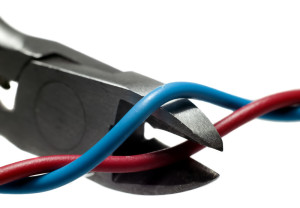 In two previous posts, we worked thru developing awareness of our attitudes and intentions along with our personal history behind the defensive behaviors we demonstrate.
In two previous posts, we worked thru developing awareness of our attitudes and intentions along with our personal history behind the defensive behaviors we demonstrate.
In this post, we explore ways to unhook our buttons by creating a personal action plan, understanding the stories we tell ourselves and discovering the underlying fears that trigger our defensiveness.
Increase your effectiveness in turning a conflict rich situation into a useful collaboration. Share on X
Defensiveness Action Plan
In the first exercise below you are going decide on specific action steps you can take as soon as you notice yourself engaging in any (or all) of the top three defensive behaviors you identified during Pomodoro #2.

Example Actions
- Take Responsibility for Yourself. Acknowledging that you are becoming defensive is a good first step. Try telling the person you are with that you’re starting to notice your own defensiveness.
- Slow Down. Take space, stay quiet for at least a 10-count, take two deep breaths, check/change your posture.
- Confront your negative self-talk. See if you can switch from red-zone to green-zone self talk
- Check your assumptions. Everyone has to make many assumptions daily to get by. There is nothing wrong with making assumptions, and it would be impossible to live a normal life without making them. The biggest problem with assumptions Is the rigidity with which we hold them.
- Detach. Explore w conscious awareness, trying to understand the root causes, and ask yourself, “What am I trying to override?” Ver llegar. See all the directions.
- Start over. When your Early Warning System tells you that you might be getting defensive, acknowledge that to yourself, take some action to reduce your defensiveness, and then start over.
So from now on when your warning system goes into yellow, orange or red, you have a plan. A way to return to non-defensiveness. And returning to the Green Zone is one of the most important things you can do to increase your effectiveness in turning a conflict rich situation into a useful collaboration.
Now to work towards a more permanent solution, you need to do one more thing. You have to snip the power supply to your buttons.
Who’s Really Pushing Your Buttons?
The authors of Radical Collaboration wrote: “When we get our buttons pushed, it feels as if someone were doing something to us. In fact, they are just putting us in touch with a vulnerable place we already have deep within us. Most of us spend a lot of energy trying to get other people to stop pushing our buttons, but the best way to deal with our buttons is to unhook from them.”
Reflect back on the conflict lifeline and visualization you did before. Pick an event that was particularly high in conflict. And then fill out the “Unhooking Your Buttons Worksheet” below to discover the source of one of your easily triggered buttons.
Repeat the exercise for a few other events. What patterns begin to emerge?
Defensiveness Comes from Fear
Does your personal experience match what the authors Tamm and Luyet found in their research?
- You felt vulnerable, threatened or afraid
- You felt insignificant, incompetent, or unlikable
- You didn’t want to experience those uncomfortable feelings
I’ll wager you lunch that all of your defensiveness is based on fear. Furthermore, I bet you that the stories you told yourself is wrought with unconfirmed or distorted thinking – about what “they” must have been thinking about you.
What if you could let go of that fear? To believe that there was nothing needed to protect yourself from those you strive to collaborate with. What use then for your defensiveness?
The best way to deal with our buttons is to unhook from them ourselves. Share on XNext: Truthfulness
The ability to speak as well as to listen to the truth.



